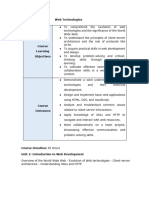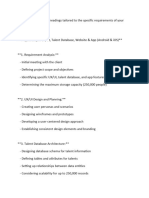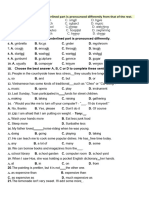0% found this document useful (0 votes)
7 views3 pagesAI Based Task Management System
The document outlines a five-month project plan for developing an application, detailing tasks for backend, frontend, and database management across various weeks. Key phases include planning, core functionality development, advanced features, testing, and deployment. Deliverables at each stage ensure a structured approach to building a fully functional app with user feedback incorporated before final deployment.
Uploaded by
singhmankaran05Copyright
© © All Rights Reserved
We take content rights seriously. If you suspect this is your content, claim it here.
Available Formats
Download as DOCX, PDF, TXT or read online on Scribd
0% found this document useful (0 votes)
7 views3 pagesAI Based Task Management System
The document outlines a five-month project plan for developing an application, detailing tasks for backend, frontend, and database management across various weeks. Key phases include planning, core functionality development, advanced features, testing, and deployment. Deliverables at each stage ensure a structured approach to building a fully functional app with user feedback incorporated before final deployment.
Uploaded by
singhmankaran05Copyright
© © All Rights Reserved
We take content rights seriously. If you suspect this is your content, claim it here.
Available Formats
Download as DOCX, PDF, TXT or read online on Scribd
/ 3























































































